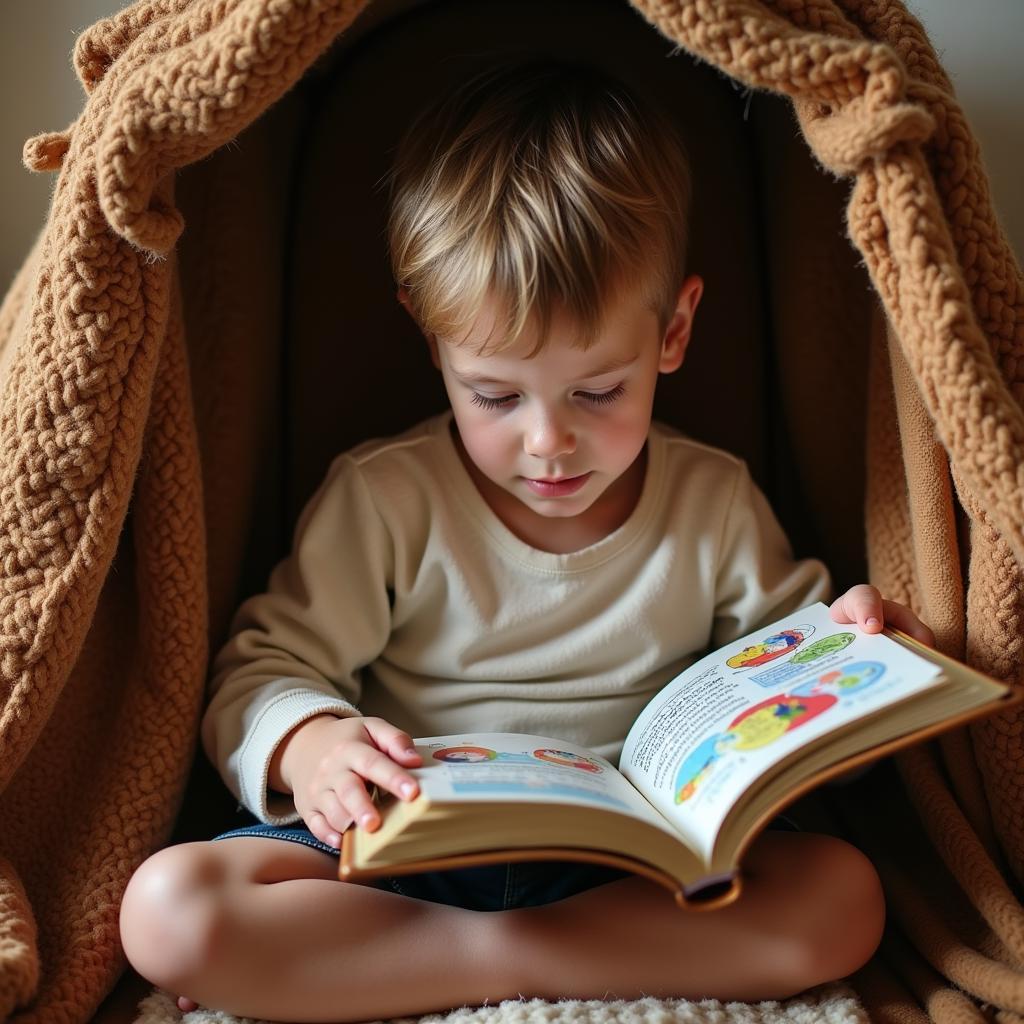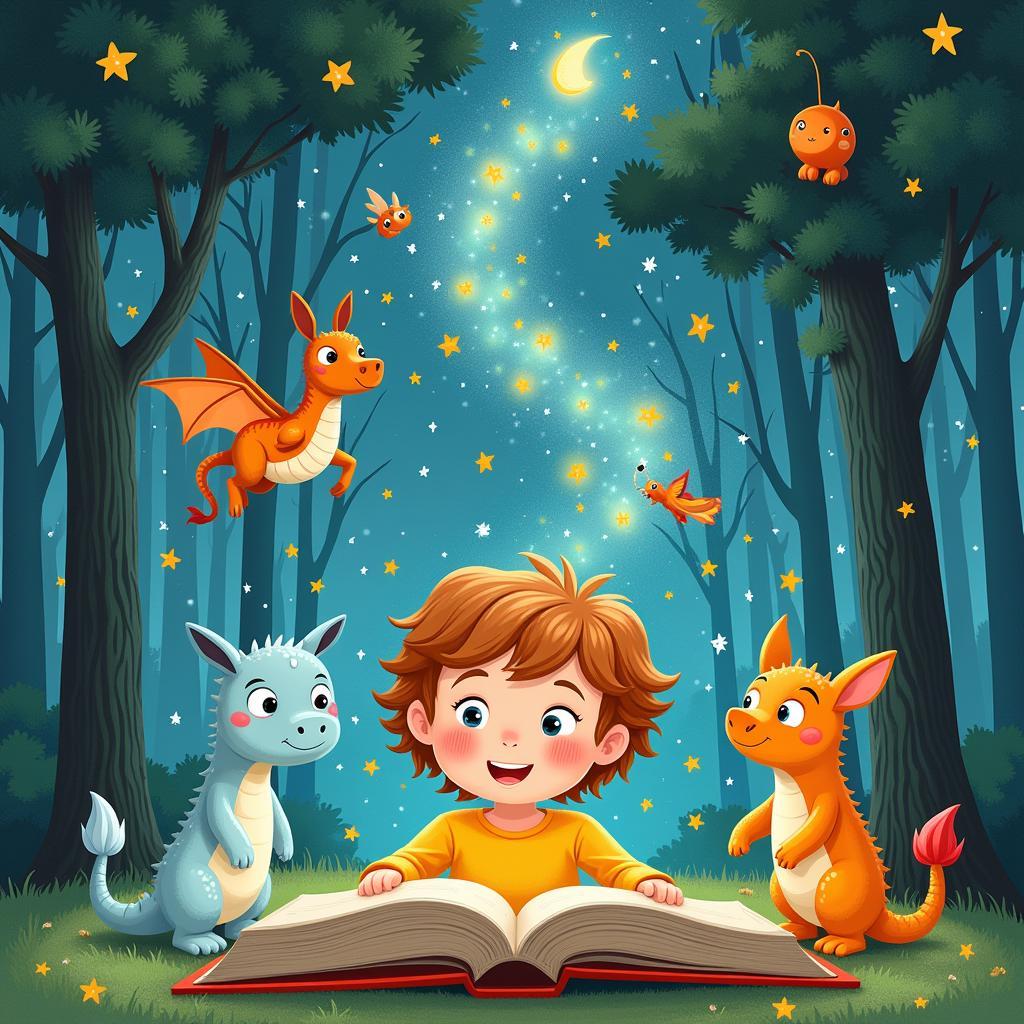Describing a favorite book from childhood is a common topic in IELTS Speaking tests, particularly in Part 2. This theme allows candidates to showcase their vocabulary, narrative skills, and ability to express emotions and opinions. Given its prevalence in past exams and its relevance to personal experiences, it’s likely to remain a popular topic in future IELTS Speaking tests.
Describe a favorite book from your childhood is an excellent opportunity to demonstrate your English proficiency and storytelling abilities. Let’s explore how to approach this topic effectively across all parts of the IELTS Speaking test.
Part 1: Introduction and Interview
In Part 1, the examiner may ask general questions about reading habits and childhood favorites. Here are some potential questions and sample answers:
- Did you enjoy reading books as a child?
- What types of books did you prefer when you were younger?
- Do you still read the same kinds of books now?
Sample answer (Band 7-8):
“Absolutely, I was quite the bookworm as a child. I particularly gravitated towards fantasy and adventure novels. They transported me to magical worlds and fueled my imagination. While I still enjoy these genres, I’ve broadened my literary horizons and now delve into non-fiction and contemporary literature as well.”
Part 2: Long Turn (Cue Card)
Here’s a sample cue card for this topic:
Describe a favorite book you read as a child
You should say:
- What the book was about
- When you read it
- Why you liked it so much
- And explain if you would still enjoy reading it now
Sample answer (Band 8-9):
“I’d like to talk about a book that left an indelible impression on me as a child – ‘The Little Prince’ by Antoine de Saint-Exupéry. I first encountered this literary gem when I was about ten years old, and it instantly captured my heart.
The book revolves around a young prince who travels the universe, visiting different planets and meeting various characters. Each encounter offers profound insights into human nature and life’s essential truths. What fascinated me most was how the author seamlessly blended whimsical storytelling with deep philosophical musings.
I was particularly drawn to the book’s central theme of seeing with the heart rather than just with the eyes. The famous quote, ‘What is essential is invisible to the eye,’ resonated deeply with me and sparked my curiosity about the world beyond surface appearances.
The charming illustrations, which were as integral to the story as the text itself, added another layer of magic to the reading experience. I found myself poring over each page, discovering new details with every read.
If I were to revisit ‘The Little Prince’ now, I’m certain I would still be enchanted by its timeless wisdom. As an adult, I believe I would uncover even deeper layers of meaning and appreciate the nuances I might have missed as a child. The book’s universal themes of love, loss, and human connection are relevant at any age, making it a true classic that transcends generational boundaries.”
 The Little Prince book illustration
The Little Prince book illustration
Follow-up questions:
- How has your taste in books changed since childhood?
- Do you think children today read as much as when you were young?
Sample answer (Band 7-8):
“My literary preferences have certainly evolved over the years. While I still appreciate the escapism offered by fiction, I now gravitate towards more complex narratives and non-fiction works that broaden my understanding of the world. As for children’s reading habits today, I believe they face more competition for their attention from digital media. However, many schools and parents are making concerted efforts to foster a love of reading in children, recognizing its crucial role in development.”
Part 3: Two-way Discussion
In this section, the examiner might ask more abstract questions related to childhood reading. Here are some potential questions and sample answers:
Q: How do you think reading habits impact a child’s development?
A (Band 8-9): “Reading during childhood plays a pivotal role in shaping cognitive and emotional development. It enhances vocabulary acquisition, improves comprehension skills, and fosters critical thinking. Moreover, exposure to diverse narratives cultivates empathy by allowing children to see the world through different perspectives. Regular reading also bolsters imagination and creativity, providing children with the tools to think outside the box and approach problems innovatively. In essence, childhood reading lays the foundation for lifelong learning and personal growth.”
Q: Do you think digital books can replace traditional printed books for children?
A (Band 7-8): “While digital books offer certain advantages like interactivity and accessibility, I believe they shouldn’t entirely supplant traditional printed books for children. Physical books provide a tactile experience that can be more engaging for young readers. They also promote better focus and reduce screen time, which is crucial in today’s digital age. However, a balanced approach incorporating both formats could leverage the benefits of each, catering to different learning styles and preferences.”
 Child reading a printed book
Child reading a printed book
Key Vocabulary and Phrases for High Scores
To elevate your IELTS Speaking performance when describing a favorite childhood book, consider using these sophisticated words and phrases:
-
Captivating narrative (noun phrase): An engaging storyline
“The book had such a captivating narrative that I couldn’t put it down.” -
Enthralling (adjective): Very exciting and enjoyable
“I found the adventures in the story absolutely enthralling.” -
To resonate with (phrasal verb): To evoke a feeling of shared emotion or belief
“The themes of friendship and courage really resonated with me as a child.” -
Vivid imagery (noun phrase): Descriptive language that creates strong, clear images in the mind
“The author’s vivid imagery brought the magical world to life in my imagination.” -
To spark one’s imagination (idiom): To stimulate creative thinking
“The book’s fantastical elements sparked my imagination and inspired my own stories.” -
Formative experience (noun phrase): An event or period that strongly influences a person’s development
“Reading this book was a formative experience that shaped my love for literature.”
 Child's imagination sparked by a book
Child's imagination sparked by a book
Examiner’s Advice
To excel in describing your favorite childhood book during the IELTS Speaking test:
- Practice narrating the story concisely, focusing on key plot points and your personal connection to the book.
- Prepare a range of descriptive vocabulary to vividly portray characters, settings, and your emotional response.
- Reflect on how the book influenced you, connecting it to broader themes or life lessons.
- Be ready to discuss how your reading habits have evolved and your current views on the importance of childhood reading.
- Use a variety of sentence structures and tenses to demonstrate your language proficiency.
Remember, authenticity is key. While it’s important to use sophisticated language, ensure your responses remain natural and true to your experiences. This balanced approach will help you achieve a high score in your IELTS Speaking test.
Describe an activity you enjoyed in your free time as a child could be another interesting topic to explore, as it shares similar themes of childhood experiences and personal reflection. By applying the strategies discussed here, you can confidently tackle a wide range of IELTS Speaking topics and showcase your English language skills effectively.


